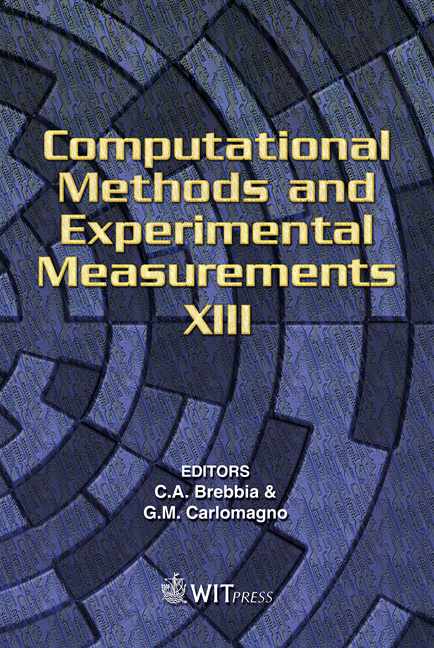3D Analysis Of Solid Reinforced Concrete Beams Subjected To Combined Load Of Bending, Torsion And Shear
Price
Free (open access)
Transaction
Volume
46
Pages
10
Published
2007
Size
447 kb
Paper DOI
10.2495/CMEM070201
Copyright
WIT Press
Author(s)
A. S. Alnuaimi
Abstract
This paper presents a comparison between experimental and an in house 3-D finite element analysis results of three reinforced concrete solid beams subjected to combined loadings of bending, shear and torsion. The finite element program adopted was based on a 20 node isoparametric element. A non-linear elastic isotropic model, proposed by Kotsovos, was used to model concrete behaviour, while steel was modelled as an embedded element exhibiting elastic-perfectly plastic response. Allowance was made for shear retention and for tension stiffening in concrete after cracking. Only fixed direction, smeared cracking modelling was adopted. The beam dimensions were 300x300mm cross section, 3800mm length. Experimental results were compared with the non-linear predictions. The comparison was judged by load displacement relationship, steel strain, and load and mode of failure. Good agreement was observed between predicted ultimate and experimentally measured loads. It was concluded that the present program can confidently be used to predict the behaviour and failure load of reinforced concrete solid beams subjected to combined load of bending, torsion and shear. Keywords: beam, solid beam, bending, shear, torsion, direct design, concrete, reinforced concrete, stress analysis, combined loading. 1 Introduction The behaviour of solid beams when subjected to combined loading is very complex. A detailed analysis would normally require a three-dimensional finite element model. Rahal and Collins [1] developed a three-dimensional analytical
Keywords
beam, solid beam, bending, shear, torsion, direct design, concrete, reinforced concrete, stress analysis, combined loading.





